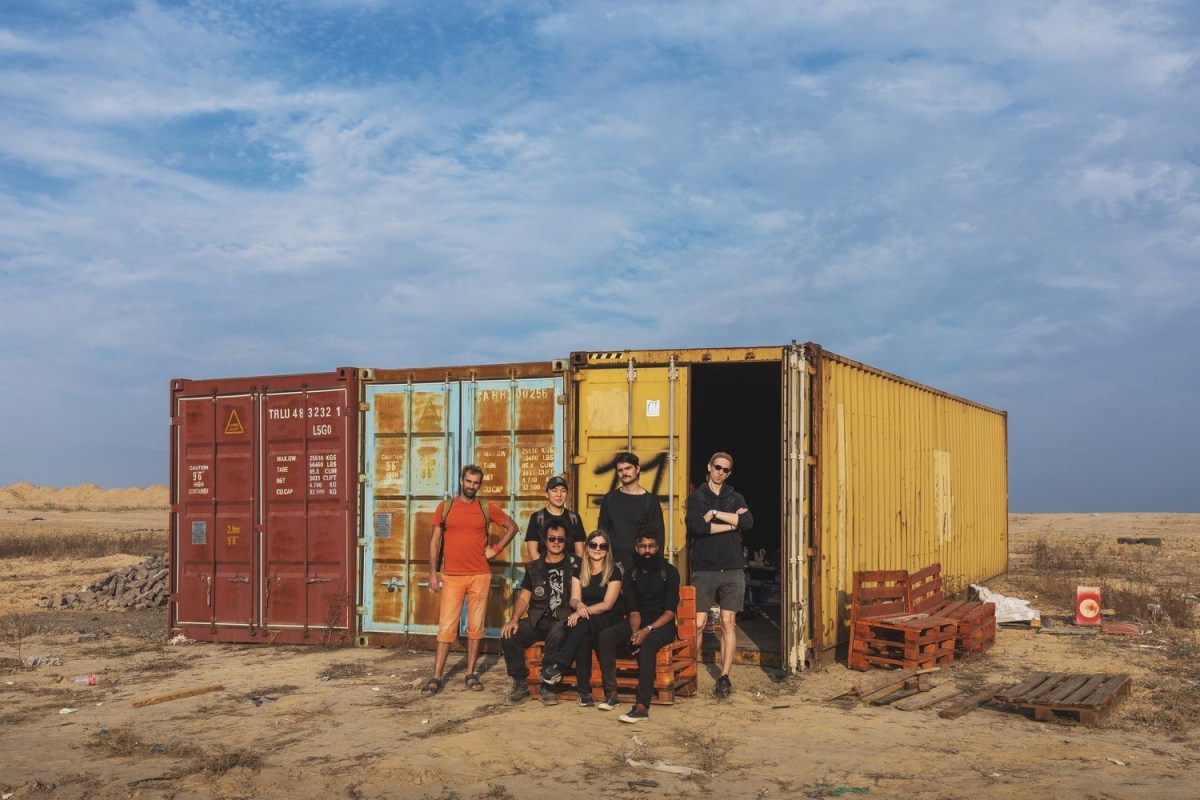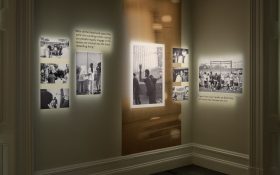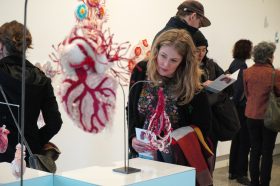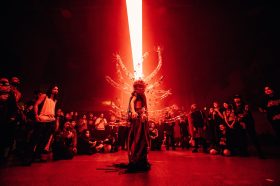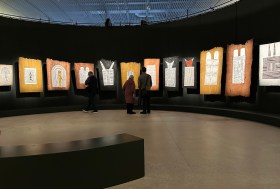The region of Central Asia has an ancient history. Within it are some of the greatest historical urban centres, alongside some of the oldest nomadic traditions that continue to thrive, having maintained an unbroken, intrinsic relationship to the land.
Throughout its history, Central Asia has weathered the rise and fall of many empires, yet that of the Soviet Union toward the close of the 20th century has brought a unique set of political, social and cultural challenges amid a time of historical transformations. Alongside far-reaching geopolitical shifts, the region is confronting an unprecedented environmental crisis.
Central Asia bears the burden of environmental disasters inherited from the Soviet era, through decades of mismanaged water resources, extensive mining and widespread dumping of waste throughout the region. What was once known as a haven for life, trade and cultural influences through the Silk Road, is becoming a literal and figurative desert. Massive lakes have dried up, desertification has accelerated and states are even risking war over water rights. The region is on the frontline of the environmental and social impact of an age where human activity is reshaping the “natural” world – the dawn of the Anthropocene epoch.
Faced with this unprecedented but undeniable reality, contemporary Central Asian artists have undertaken diverse projects and artworks to depict and elucidate the fragility and uncertainty of life in the region today. They are playing a unique role in portraying the region, with works grounded in the intention of representing their region accurately in the modern era, while also serving as a source of inspiration for people from other regions.
These artists do not interpret environmental issues in a restrictive or narrow sense; rather, they are finding multifaceted, intersectional ways of examining wider contemporary themes and present day struggles connected with the deteriorating environment.
In this article:
Reframing local discourse on the environment
During New York Jewellery Week 2021, much of the world was (re-)introduced to a contemporary Central Asian artistic scene via the News from Central Asia show. The exhibition featured artists from all five ex-Soviet Central Asia republics (Kazakhstan, Kyrgyzstan, Tajikistan, Turkmenistan and Uzbekistan) for the first time in a single exhibition.
Curator Aida Sulova asked each artist to craft experimental jewellery pieces that would encapsulate a specific Central Asian theme and present the current dynamics of the region to an audience that would likely be unfamiliar with it.
The environment was a prominent theme throughout the exhibition: Jol Jol’s Jetysu presented a golden tiara adorned by the shapes of the seven rivers that flow into the disappearing Lake Balkhash in Kazakhstan; and Dilyara Kaipova’s Curse of Cotton traced rampant desertification as a result of the massive Uzbek cotton industry, and shone a light on the issue of forced labour.
According to Sulova, there previously had been a perception that environmental protection was merely an issue for nature enthusiasts and scientists, a niche concern that would not affect the average person in the region. Yet, as the theme of News highlighted, the show has made it abundantly clear that the declining environment is now a headline issue in the international contemporary art scene.
Another of Sulova’s initiatives is Once Upon A Plastic Bag, an art-activism project designed to address the pervasive waste issue in Kyrgyzstan. As part of the project, Sulova launched the Trash Can Initiative, adorning bins across the capital city of Bishkek with painted mouths devouring plastic bottles. These serve as a poignant reminder that what we discard not only impacts the environment, but also has repercussions on our own well-being.
The links between environmental art, activism and social change are also being teased out on a macro level in neighbouring Kazakhstan. Saule Suleimenova is a Kazakh artist who uses plastic bags as a medium to illustrate modern Kazakh society and reflect on modernity and waste in the Great Steppe. Her exhibition in Almaty, We Are Ordinary People, drew nearly 100,000 attendees, with a centrepiece that reflected on the Bloody January protests, which occurred in January 2022 in Kazakhstan.
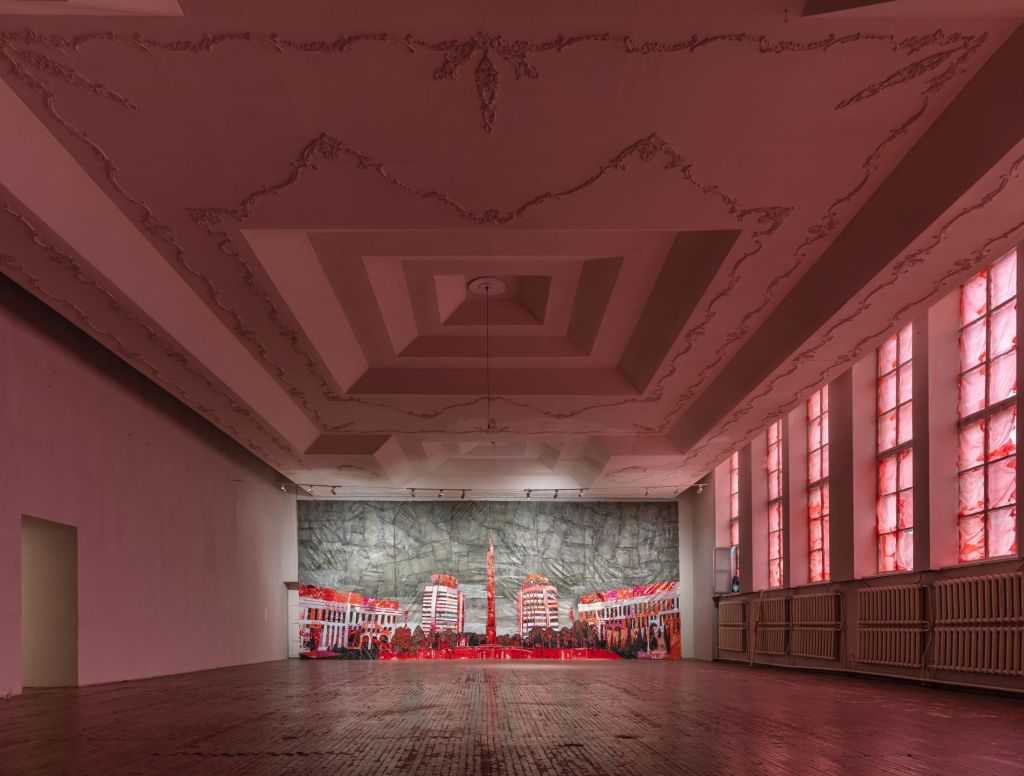
Originally a single-issue protest against a steep petroleum price increase, the response morphed into a general movement for widespread political change, ending in a brutal military crackdown. The public impact of Suleimenova’s show was deep and immediate – the Kazakh authorities released the names of all Bloody January’s victims the day after the exhibition ended.
Meanwhile, activist-run spaces that use environmental art as grassroots activism have emerged in the area, such as the Trash Museum of Bishkek, which opened in October 2023.
The Museum is a public institution raising issues connected with waste, situated within a shipping container on an active landfill in Bishkek, Kyrgyzstan. It reexamines the historical evolution and current state of the local Kyrgyz people’s relationship with the land, by delving into Bishkek’s “trash history” from the 1920s to the present. Instead of ignoring this inconvenient reality, the Museum uses it to showcase the unglamorous, yet entirely real and noteworthy aspects of Kyrgyz history.
Voices of indigenous communities in Central Asia
As is the case for all Indigenous communities, the relationship between the land and its people is a key element of Central Asian society. Although it may seem obvious, critically examining the land and the changes it is going through has only now garnered the attention it deserves, after being largely overlooked in Central Asian art until these recent efforts.
In the Soviet era, much Indigenous produced art and craft was relegated to being “heritage pieces”, artificial legacies engineered under the state’s control. This meant that formal artworks purportedly representing the environment were anachronistic, and precluded any investigation into the effects of Soviet-era programs on the land.
Environmental art in the region has now carved out a critical new role in the reclamation of indigeneity and renewed expression of ancestral heritage. The end of a 200-year long Russian occupation over Central Asia in 1991 opened up new possibilities for dialogue and a revitalised attachment to the land. Many Central Asians had felt suffocated in their own homelands, as Russia’s imperial rule forced them into an externally imposed monoculture.
Since the Soviet Union’s collapse, Indigenous peoples have access to the land once again; yet, as the environment of the region has changed, so have the artistic perspectives on the evolving relationship between the peoples and the land.
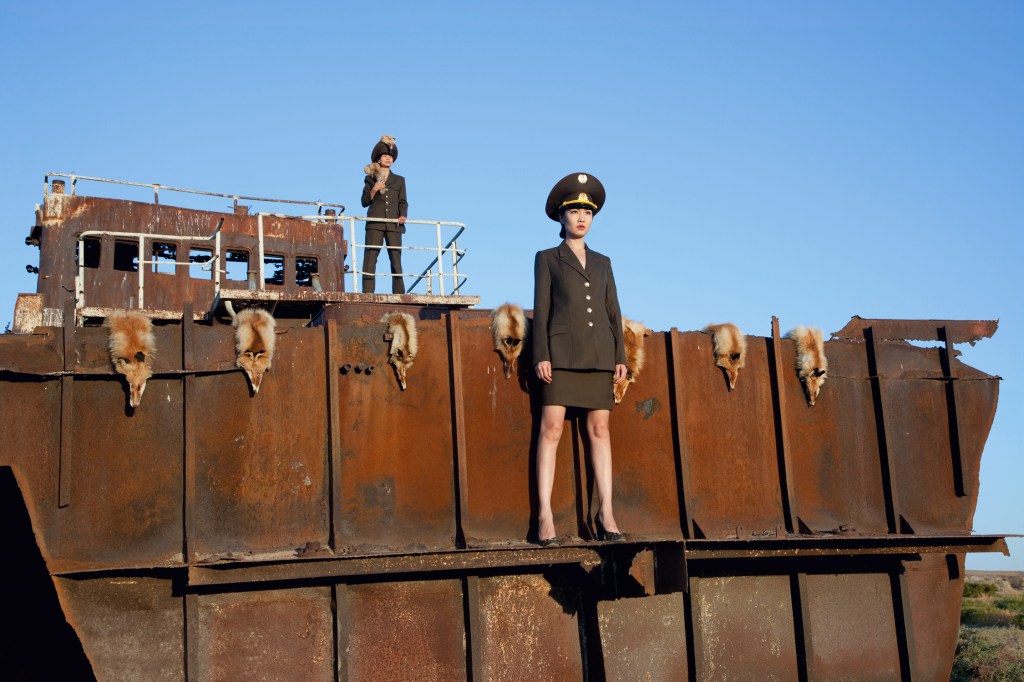
Almagul Menlibayeva’s video-photography project Transoxiana Dreams presents a modern and decolonial voice on the local cataclysmic experience of the alarming disappearance of the Aral Sea from Uzbekistan and Kazakhstan. It was once the fourth biggest lake in the world, approximately the size of Belgium, but is now a barren desert due to Soviet-era water management policies geared to the mass-production of cotton in the area.
Menlibayeva’s work combines ancient mythology with modernist imagery, mixing ships in the barren desert with enigmatic and alluring four-legged female creatures resembling centaurs, recalling how the area’s nomadic Indigenous people were depicted by the ancient Greeks.
From an ecological perspective, Menlibayeva is attempting to show what happens when Indigenous people, while still on their own land, are surrounded by colonial powers exploiting the environment and transforming the landscape in the process of extracting resources. The artistic impulse combines with the drive to reclaim true occupancy of the land – a step towards provoking dialogue and driving practical action to reverse destructive environmental trends.
Read: Orientalism, a stain that taints Australian opera?
Given that Central Asia is at the frontline of what science tells us may be a global environmental catastrophe, contemporary Central Asian artists and their role in portraying and elucidating environmental issues offers a vital lesson on the power of artistic expression as a form of advocacy and as a potential catalyst for social transformation. Art can serve as a potent tool for raising awareness, inspiring action and fostering a deeper connection between people and their environment.
The works outlined here are compelling illustrations of how the environmental crisis in Central Asia – as well as for other regions around the world – is interconnected with broader social, political and cultural challenges.
The region’s experience exemplifies at once the potential inspiration and the confronting insights drawn from an approach that addresses the complex interplay between cultural expression, environmental degradation and decolonisation.
This article is published under the Amplify Collective, an initiative supported by The Walkley Foundation and made possible through funding from the Meta Australian News Fund.
